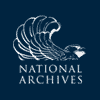John Jay’s An Address to the People of the State of New-York on the Subject of the Constitution Editorial Note
John Jay’s An Address to the People of the State of New-York, on the Subject of the Constitution
Editorial Note
Sometime between the appearance of Federalist 64 in March 1788 and the Doctors’ Riot, which occurred in mid-April, Jay wrote his seminal paper, An Address to the People of the State of New-York, on the Subject of the Constitution, Agreed upon at Philadelphia, the 17th of September, 1787. The Address was expected off the press by the 12th of April, based on Jay’s draft letter to Washington of that date, subsequently redated 20 Apr., below, a day before Jay was seriously injured in the street violence of New York.1 It was written prior to the spring election of delegates to the state ratifying convention and undoubtedly aimed at influencing the electors’ choices.2 The Address, no draft of which has been found, has been evaluated as “far more important” to the political battle over ratification in New York than The Federalist.3
The Address, whose publication was advertised by Samuel and John Loudon on 15 April, appeared as an anonymous pamphlet, considerably longer in text and more wide-ranging in subject matter than any of Jay’s Federalist letters.4 Unlike the letters of “Publius,” Jay’s Address dealt with specific Antifederalist criticisms, especially those dealing with the absence of a bill of rights in the proposed Constitution and the desirability, as the Antifederalists saw it, of calling a second convention. The pamphlet format gave Jay ample opportunity to answer these points and to review the major arguments in favor of the Constitution: the weakness of Congress under the Confederation, the “virtue” and near unanimity of the Philadelphia framers, the Constitution’s safeguards against the concentration of power, the unlikelihood that a better plan could be agreed upon by a second meeting, and the consequences to the nation of rejecting the proposed Constitution. The Address was distinguished by its moderate tone and soundness of judgment. Sarah Livingston Jay reported from Elizabethtown that it was received “with great approbation.”5 A more objective observer, writing from Poughkeepsie on 3 June, remarked: “Had the pamphlet attributed to Mr. Jay made its appearance a little sooner, I am well persuaded there would have been a still more compleat Revolution in the minds of the people. That publication treated the subject as relative to us in the proper light: As the States one after another came into the measure the great political controversy gradually changed its ground, and what was once a question on the merits of the Constitution now becomes only a question of public expediency and policy.”6 Jay resisted Franklin’s suggestion that he make his authorship known in order to add to the weight of the document, but, according to Sarah Livingston Jay, Jay’s “well known style” gave him away in any case.7 On 8 June 1788, Washington sent Madison a copy, although he had “little doubt” of Madison’s having received a copy of it. “It is written with much good sense & moderation. I conjecture but upon no certain ground, that Mr. Jay is the author of it. He sent it to me sometime ago, since which I have received two or three more copies.”8
Despite its wide circulation, the address prompted few Antifederalist responses. The only substantial criticism appeared in a four-page postscript added to a pamphlet by “A Plebian” (possibly Melancton Smith) that was first offered for sale on 17 April. This piece declared that Jay’s address was overly critical of the Confederation and excessively praised the Constitution; it was especially disturbed by the address’s dismissal of the need for the addition of a bill of rights.9
1. See SLJ to Susannah French Livingston, [17 Apr. 1788], below.
2. Samuel Blachley Webb to Joseph Barrell, 27 Apr. 1788, in Worthington C. Ford, ed., Correspondence and Journals of Samuel Blachley Webb (3 vols.; New York, 1893–94), 3: 98–100; 20: 964.
3. 72; Robert A. in Reading the Early Republic (Cambridge, Mass., and London, 2004), 151; 254; 291–92; 337.
4. “A Citizen of New York [John Jay]”, An Address to the People of the State of New-York, on the Subject of the Constitution, Agreed upon at Philadelphia, the 17th of September 1787 (New York: Samuel & John Loudon, Printers to the State, 1788); no. 21175. For the advertisement, see New-York Packet, 15 Apr.–11 July. Newspapers also reprinted the pamphlet in whole or in part, generally attributing it to JJ. See the extract in Massachusetts Centinel (Boston), 30 Apr., reprinted in the American Herald (Boston), 1 May; New Hampshire Gazette, 7 May; Massachusetts Spy, 15 May; New Hampshire Spy, 2, 6, 10, and 13 May; New Jersey Journal, 7, 14 May; Freeman’s Oracle (Exeter, N.H.), 16, 23 May; Carlisle Gazette, 21, 28 May, and 4 June; United States Chronicle (Providence) 22, 29 May, and 26 June; Pennsylvania Packet, 5, 9, and 10 June; and the June issue of the American Museum (Philadelphia). The entire pamphlet may also have appeared in no longer extant issues of the State Gazette of North Carolina. See 20: 925–26.
5. SLJ to JJ, 19 June 1788, below.
6. Country Journal (Poughkeepsie), 3 June 1788. This piece was widely reprinted. See New-York Packet, 6 June; Independent Journal (New York), 7 June; Pennsylvania Journal, 11 June; New-Haven Gazette, 12 June; Maryland Journal and Salem Mercury, both 17 June; United States Chronicle (Providence, R.I.), 19 June.
7. See John Vaughan to JJ, [before 27 June 1788], ALS, PPAmP: Vaughan (EJ: 2567); Dft, NNC (EJ: 8144).
8. GW to JM, 8 June 1788, PGW: Confederation Series, 6: 320; 11: 100–101; 10: 1586.
9. On the reception of the address, see 20: 922–27.

![University of Virginia Press [link will open in a new window] University of Virginia Press](/lib/media/rotunda-white-on-blue.png)
